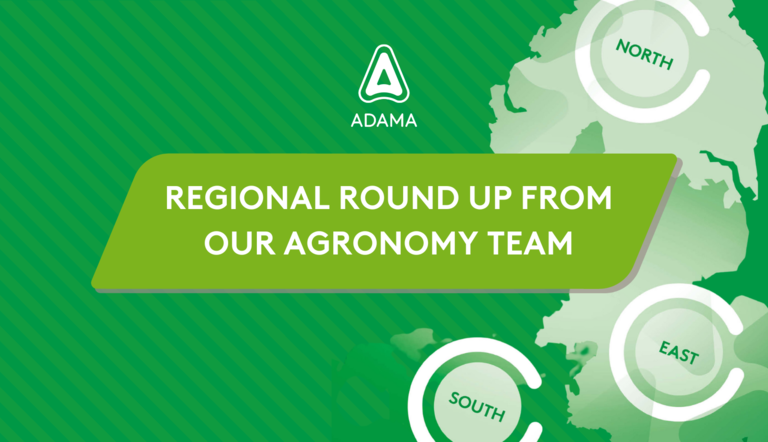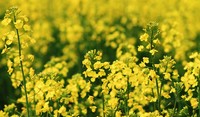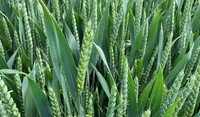
Autumn 2023 weed control... A look ahead from ADAMA's agronomy team

DAVID GRIFFITHS
SENIOR AGRONOMY MANAGER, WEST AND SOUTH
Whilst it’s still a little too early to start predicting what’s going to happen this autumn – especially as it looks as though this year’s harvest could be quite protracted due to the catchy weather – it’s worth thinking about what the next cropping cycle might entail and to start planning accordingly. This is particularly true where black-grass and ryegrass have been seen above wheat crops in the run up to harvest (mainly in places where crops were drilled early this time last year).
The over-riding message once again is to resist the urge to get crops in too early. Likewise, in light of the damp conditions at present, where barley and oilseed rape have already been harvested, there will be plenty of moisture and time available for growers to let a good chit of problem grassweeds to emerge before spraying them off with glyphosate. But remember, most black-grass seed won’t really germinate with any vengeance until the second half of September so be prepared to play a waiting game.
In addition to the dreaded black-grass, ryegrass is also becoming increasingly problematic as it is often more difficult to deal with than black-grass and can cause even greater yield losses.
Brome is also becoming a problem, particularly where direct drilling is prominent, with many growers I’ve spoken to reporting mixed black-grass and brome populations which could prove tricky to deal with.
In a lot of these scenarios, ADAMA’s range of pre- and post-emergence herbicides are very useful in bolstering flufenacet and cinmethylin-based weed control programmes: here, the likes of pendimethalin and diflufenican not only add consistency and efficacy against black-grass, but can also power up ryegrass and brome control.
MATT WELTON
REGIONAL FIELD SUPPORT, NORTH WEST
It’s a very similar situation in the North West where an increasing presence of ryegrass is causing problems, particularly in wheat fields. As a result, some of the growers I’ve visited in recent weeks have told me they’re considering introducing combinable maize into their rotations so that they can improve ryegrass control by using a different and wider selection of herbicide active ingredients.
Like many other parts of the UK, the North West has had its wettest July in 11 years. That’s making harvest scheduling a tricky proposition, with results to date suggesting that whilst barley yields are OK, OSR yields have fallen compared to last year. But, every cloud has a silver lining, and as David suggests, the moist conditions should enable weed seeds to grow away and be destroyed ahead of next year’s crops being drilled.
HOLLY PRATT
SENIOR AGRONOMY MANAGER, EAST
We’ve also had our fair share of rain in the East, with the ongoing period of unsettled weather frustrating growers who are desperate to get the combine rolling. Where crops have been taken, barley yields are looking promising, but it still too early to get a real idea of how the remaining cereal crops are going to fare.
Despite the wet season, some new crops of OSR have already been drilled, with these crops going into soil with plenty of moisture. Whilst this is good for germination rates, it will also help weeds to get away quickly, so growers should think seriously about applying a pre-em or early post-emergence herbicide treatment to provide a good base of weed control: where brome is an issue, FALCON (100 g/L propaquizafop) will give good control in circumstances where other cereal herbicides may struggle.
Rotational changes – either by introducing new crops or switching to spring drilling – will also help in the fight against difficult to control weeds, with both strategies allowing a wider range of actives to be used. It’s also worth spending a little time finding out the resistance status of the weeds on your farm to ensure the correct actives are being applied.
ALEXANDRIA BELL
REGIONAL AGRONOMY MANAGER, NORTH EAST
It’s a similar story in the North East where harvest has very much been a stop-start affair.
As we look ahead to next season’s weed control requirements, one of the best strategies for ryegrass, brome and black-grass is to look at the rotation: some growers in my region are considering growing rye as an AD energy crop as this will bring improved diversity both in terms of crop species and herbicide actives.
Elsewhere, there has been talk of using sheep to graze oilseed rape crops in the early part of the winter so that any grass weeds that come through can be treated with an alternative herbicide to those used in cereals. A spring-sown cereal crop can then be established into what should hopefully be a much cleaner seedbed.
There has also been a notable increase in mentions of the plough, with growers resigned to the fact that they may need to fully invert seedbeds to break the weed cycle.
ALISTAIR ECCLES
KEY ACCOUNT AND AGRONOMY MANAGER, SCOTLAND & IRELAND
The fine and settled weather that we enjoyed in June has subsequently given way to a cooler and changeable July which has caused a significant amount of harvesting woes.
Where crops have been taken, winter barley yields have been acceptable but nothing special. Thankfully, quality has been decent although the heavy rain in early July did encourage some brackling.
Seed bed moisture is, as you’d expect, high at the moment and encouraging growers to plant OSR. The same moisture will favour weed germination, so a pre-emergence herbicide treatment, for example using SULTAN (500 g/L metazachlor), will be required.
Harvesting of the current crop of winter oilseed rape should start any day now, but growers are just waiting for a favourable weather window. Meanwhile, winter wheat harvest isn’t anticipated to start until mid-August at the earliest.
The feedback from many agronomists north of the border is that disease control in a lot of this year’s wheat crops wasn’t sufficient, either due to a lack of T0 and/or T1 sprays, or simply because these treatments were late being applied. There’s definitely a lesson to be learned for next year’s cereal crops, especially as a lot of the agronomists I’ve spoken to are reporting that the inclusion of folpet in fungicide plans produced a significant uplift in green leaf area and retention.


